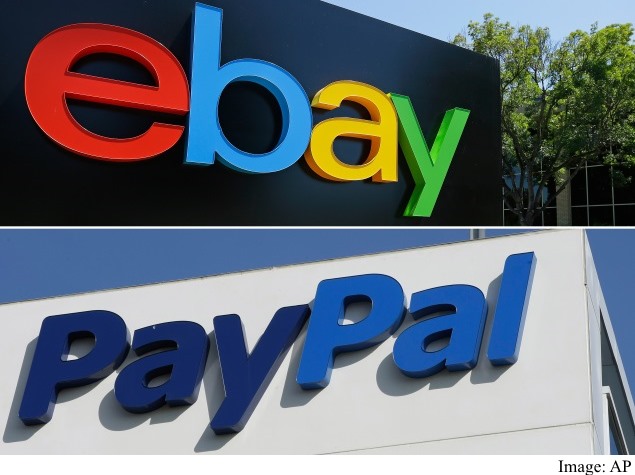The
ride-hailing app Uber, the apartment rental site Airbnb and other
darlings of the next generation of Silicon Valley startups are reshaping
the way people use the Web. They are also changing expectations about
just how much money private companies can raise while still staying out
of the public markets.Known as the unicorns, these private technology
companies are worth $1 billion or more, thanks to an influx of cash
from venture capital firms, hedge funds, private equity firms and mutual
funds.
But alongside the Wall Street money flowing into these
companies' coffers, a familiar set of names is operating behind the
scenes by advising, investing in and, in some cases, founding the
unicorns.
The PayPal Mafia - a nickname given a group of alumni of PayPal, the payments company that went public in 2002 and was acquired by eBay - has its hands in many, if not most, of today's most valuable private tech companies.
Their
enduring influence, more than a decade after they made their first
fortunes, speaks to the tightknit social fabric of Silicon Valley's
technology industry and to the trust new entrepreneurs place in those
who have succeeded before them. And now, the PayPal group's close ties
with the current crop of unicorns - a collection of some of the most
valuable technology startups ever seen - suggest its influence is
undiminished.
Peter Thiel, a co-founder and former chief executive of PayPal, is an investor in companies including Airbnb, the big-data company Palantir, the spaceflight provider SpaceX and the payments company Stripe, four of the most valuable tech companies in Silicon Valley today.
Jeremy
Stoppelman, the former vice president for engineering at PayPal, has
personally invested in the payments provider Square, Uber, Pinterest, Airbnb and Palantir.
And
Keith Rabois, the former head of business development at PayPal who is
now a partner at Khosla Ventures, holds shares in Airbnb, Stripe and
Palantir, to name a few.
The shared experience of PayPal alumni
makes their advice - and money - particularly valuable to young
entrepreneurs. An online payments provider founded in the 1990s, the
company succeeded despite going public shortly after the terrorist
attacks of Sept. 11, 2001, even as the economy was still reeling from
both the attack and the collapse of the dot-com bubble.
"PayPal
was an extreme experience in survival against all odds, over and over
again, with enormous and lasting success," said Max Levchin, PayPal's
co-founder and chief technology officer. "Like veterans of an intense
military campaign, we fall back on lessons learned and relationships
established in our early 20s."
After PayPal was acquired by eBay in 2002, the alumni of PayPal emerged as among the few willing to invest in new tech startups.
"We
went from this bunch of misfits to the center of the ecosystem," Rabois
said. "Entrepreneurs needed capital, and the only place to get the
capital was from us."
Even as the members of the alumni group have
gone on to found new companies and take roles at venture capital funds,
they have continued to invest in each other's companies and in new
entrepreneurs.
"There's a vicarious reliving of our old experience
by working with new, young teams," said Roelof Botha, a partner at
Sequoia Capital who was head of business development at PayPal and has
invested in Square. "The surest path to dementia is to stop working when
you're young."
Part of the reason this small cabal of friends -
all men, mostly white, under the age of 50 - remains at the center of
the action in Silicon Valley is that, among the entrepreneurial elite,
success begets success.
"There's a network effect to these
things," said Stoppelman, who today is chief executive of Yelp, the user
review site he co-founded. "If you have a name that's associated with
success, people will seek you out. Why do smart people go to Harvard?
Because previous smart people went to Harvard."
Or in this case,
entrepreneurs want PayPal alumni to invest in their startups because
PayPal alumni have invested in previously successful entrepreneurs. For
more than a decade, the PayPal group has been integral to the founding
or financing of many of the best-known startups, making them even richer
in the process. Thiel, who now runs venture and hedge funds, was one of
the earliest investors in Facebook. Several PayPal alumni invested in
Yammer, which was acquired by Microsoft for $1.2 billion in 2012.
Yammer
was also founded by a former PayPal executive, David Sacks, PayPal's
former chief operating officer. And, indeed, the group has not only
funded many of today's successful technology companies but also has
continued to create them.
LinkedIn, now worth $32 billion, was
co-founded by Reid Hoffman, another former PayPal chief operating
officer. Stoppelman and another PayPal alum, Russell Simmons, co-founded
Yelp, now worth $3.5 billion. And Elon Musk, who co-founded the company
that became PayPal, subsequently started Tesla, worth $23 billion, and
SpaceX, a unicorn valued at $12 billion.
Even YouTube, acquired by Google for $1.6 billion in 2006, was founded by three PayPal alum: Chad Hurley, Steve Chen and Jawed Karim.
"We
have a very good collective résumé," said Scott Banister, a former
PayPal board member, explaining the sustained influence of the group.
"It's not just that you're associated with the company, it's that you're
associated with the other people associated with the company."
After leaving PayPal, Banister co-founded an email service, IronPort, which he sold to Cisco Systems for $830 million.
Investing
in new entrepreneurs today allows these seasoned veterans of the
technology scene to stay close to the ground, where new entrepreneurs
are trying to bootstrap their way to fortune and fame.
Levchin
sold a social gaming company, Slide, to Google in 2010. He recently
started a payments company, Affirm, backed by several former colleagues.
"At Yelp,
every time it was time for a funding round, Peter Thiel was my go-to
adviser," Stoppelman said. "When it came to thinking about the product
and growth strategies, Max was my day-to-day. For broad thinking, I
would go to Keith."
But investing in startups is inherently risky.
While PayPal alumni have managed to back several big winners, the
specter of failure always looms large.
"Anytime I write an angel
check, I say, 'This is probably the last time I will see this money,' "
Stoppelman said. "It hurts just as much to lose $25,000 as it would to
lose $1 million."
For now, however, the collective résumé of the PayPal Mafia is largely unblemished.
www.pixotritechnologies.com














